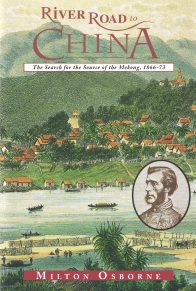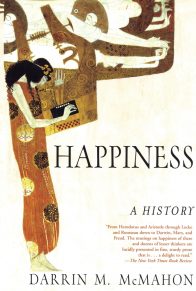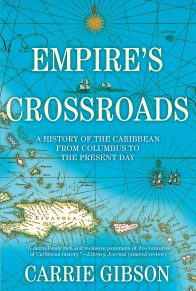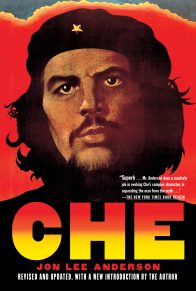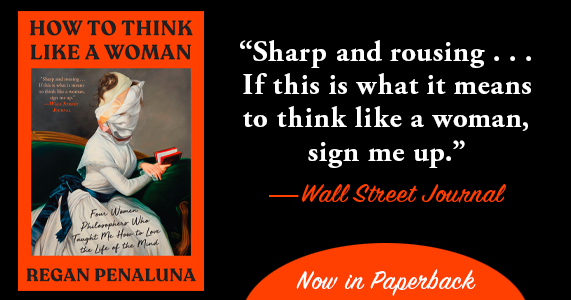Seen on a fine winter’s day, the Angkorian temple tower standing on a hillside above a valley in eastern France looks inescapably incongruous. No matter that this is a monument to Doudart de Lagr”e, one of France’s most distinguished, if largely forgotten, nineteenth century explorers, a man who served his country in Cambodia. No matter, either, that the tower is located in his birthplace, Saint-Vincent-de-Mercuze, a village twenty-seven kilometres from Grenoble and so small that its name does not appear in full on a large-scale road atlas. The ultimate impression is bizarre as a visitor views the monument beneath the towering cliffs of the Grande-Chartreuse mountains and sees, beyond, the distant Alps capped with snow. It would be hard to imagine a more striking contrast than that between the fecund tropical world close to the mighty Mekong River, which the monument’s architecture seeks to summon up, and the austere mountains and valleys of the Dauphin”.
Yet to dwell on the bizarre would be unfair to the man whom the monument commemorates.
Saint-Vincent-de-Mercuze was not only the ancestral home of Ernest Marc Louis de Gonzague Doudart de Lagr”e, French naval officer and leader of the French expedition up the Mekong River in 1866-68. It was also, after many vicissitudes, the final burial place for his mortal remains. Today Lagrée’s name is hardly known outside France, except among the ranks of those who share a fascination with the history of exploration in Southeast Asia. And even in his natal village his monument seems scarcely to command the interest and respect that might be expected.
Before reaching Saint-Vincent-de-Mercuze, I knew that this unusual monument had originally been located in Grenoble, only to be removed by the civic authorities in the dead of night from its place of honour in the city’s post office square in 1961 as part of a program of `modernisation’. And I knew that another, French, writer who had sought information about the monument from Saint-Vincent’s mayor had never received a reply to his letter of enquiry. It was as if the commune of Saint-Vincent-de-Mercuze felt vaguely ashamed of this exotic monument, just as the councillors of Grenoble had felt it necessary to remove the tower from their city under cover of darkness.
So I was not entirely surprised when enquiries about the monument made at the mairie led to my being directed not to the mock Angkorian tower but to the Lagr”e family mausoleum, located high above the village in a deconsecrated church. Here, indeed, there is a more conventional tribute to the explorer’s memory, with a bust of the man and a fine, black marble slab inscribed in gold with the words that Lagr”e is supposed to have uttered while still a schoolboy in the Jesuit college at Chamb”ry: `France is my homeland. I would prefer to be a nonentity here than a great lord in a foreign country.’ The best evidence suggests that these words are nothing more than a posthumous exercise in secular hagiography. Only afterwards, and without any indication of its location on the map of the village which the staff at the mairie had given me, did I find the temple tower, with the panels around its base depicting scenes from Lagr”e’s life. All were defaced, with the explorer’s head knocked off in every case. There seemed a sad symmetry between this fact and the contemporary rape of the statuary and carvings found in Cambodia’s Angkor temple ruins–ruins that are also depicted on this extraordinary monument.
The late twentieth century has been less than kind to the memory of men who were once hailed as heroes, and Doudart de Lagr”e is not the only one whose monument has been treated with disdain, and worse. Francis Garnier, the man who led the Mekong Expedition to its conclusion after Lagr”e died a tragic death in China, is honoured with a statue in Paris; a statue which has been mocked by those who abhor the imperialist values it enshrined when it was erected in 1896. In truth, it is an extraordinary confection. Garnier stands in a classically heroic pose, with half-naked women and wild animals drawn from an Indochinese bestiary draped about his legs and feet. When I last saw it, Garnier’s nose bore what looked at first like a partially inflated condom. It was a relief, at least, to realise that it was only a faded plastic `red nose’ of the kind sold for charity.
Rather closer to the Mekong River itself, on its tributary the Nam Khan, not far from Luang Prabang, the former royal capital of Laos, is another monument, a tomb built over the remains of the French naturalist and explorer, Henri Mouhot. Often mistakenly identified as the `discoverer’ of the ruins of the great Cambodian temple complex at Angkor, Mouhot more accurately was their first important Western publicist. He, like Lagrée and Garnier, had led a life in the Indochinese region that was closely linked to the Mekong River. When I saw his tomb in 1996, only a few years after it had been reclaimed from the jungle, there were already signs that some recent visitors had tried to vandalise a plaque attached to its side.
This recital of monuments and tombs, of neglect and defacement, has a common theme–the Mekong River. Francis Garnier once wrote that he was obsessed by the river. He had, in his words, une monomanie du M”kong. I hope my own interest in the river can more kindly be described as a deep and abiding fascination. It is a fascination that began when I first caught sight of the Mekong in 1959 through the windows of a noisily vibrating Royal Air Cambodge DC3 flying from Saigon to Phnom Penh.
At the time I knew little more than the river’s name and the fact that it flowed through Cambodia, the country in which I was about to begin a posting as a junior foreign service officer. Even though this was in April, and so at the height of the dry season when the Mekong was at its lowest level, what I saw through the thick, dusty haze was a river of enormous size stretching in great serpentine bends into the far distance. My experience of large rivers was limited to having seen the Murray River in Australia and it was immediately apparent that what lay beneath the aircraft was something of a quite different order. I knew nothing of this great river’s history. In this, I found, I was part of a large majority, even among those who knew of the river’s existence and far more about Southeast Asia than I did in 1959. Neither did I realise that the first major expedition to chart the Mekong’s course had set out from Saigon in southern Vietnam less than one hundred years before I had my first aerial view of the river’s grandeur. Amazingly enough, and despite all the exploration that took place in the intervening years, it was not until 1994 that the source of the Mekong was finally pinpointed in eastern Tibet. At last there was an end to the debate that had raged over centuries as to just where the river began its long journey to the South China Sea.
Living in Phnom Penh meant being constantly aware of the Mekong. Ocean-going ships came up the river to unload at the city’s docks and carry away their cargoes of rubber and rice. Local wood-fired ferries brought passengers downstream from distant provinces. And the river formed the stage for the annual Water Festival which, when I first saw it, was still graced by the presence of the Cambodian king. Taking place over several days, the festival was a mix of bacchanalian excess, gratitude for the end of the rainy season and days filled with boat races whose finishing line lay at the point where the Mekong joins its major Cambodian tributary the Tonle Sap.
But it was not just this range of human activity that captured my attention, for the Mekong has its own life marked by rises and falls in height according to the seasons–the difference between low and high water in Phnom Penh is as much as ten metres. And, most strikingly of all, as the flow of the water in the Mekong grows ever greater in the rainy season, with the river’s size swollen not just by the rains but also by the melting of the distant snows in Tibet, an amazing natural phenomenon occurs. With its bed unable to accommodate all of the water flowing down the river, part of the Mekong’s volume backs up into the Tonle Sap so that this tributary ceases to flow south and instead reverses to run backwards into Cambodia’s Great Lake. For a brief moment at the end of the rainy season the waters of the Tonle Sap stabilise, ceasing to flow in either direction. Then, suddenly the flow reverses and rushes towards Phnom Penh. And as it does, the river carries with it a huge quantity of fish which are harvested for weeks and then carried away in ox carts to be dried to form the protein base for Cambodia’s rural population living distant from the river system.
It is impossible to overestimate the importance of this natural phenomenon and thus the importance of the Great Lake. It is the largest freshwater lake in Southeast Asia and the fish that are so readily harvested from its waters and from the river that flows out of it contribute more than 60 per cent of the Cambodian population’s protein intake. The distinctive pungent smell of drying fish that greets a visitor entering a Cambodian village in late November or early December is testimony enough to this fact. Even a brief review of the Great Lake’s dimensions and its variation in size from wet to dry season underline how remarkable is its transition from one period of the year to another. At its lowest level the lake covers approximately 2700 square kilometres, but this coverage swells to no less than 16 000 square kilometres at its highest level, with depths reaching as much as nine metres. At low water, large areas of the lake are little more than one metre deep.
Living in Phnom Penh in the early 1960s meant coming to know the river and its tributaries in peaceful times. It was a focus for water sports, for sailing and water skiing, and even, if you were far enough away from Phnom Penh’s pollution, for swimming. But I soon came to know the Mekong as something more than a setting for sport and relaxation. As plans slowly developed to tap the river’s potential for irrigation and hydro-electricity, I travelled with the first Australian engineer to carry out a preliminary reconnaissance of the Mekong between the isolated provincial settlement of Kratie and the major waterfalls located at the border between Cambodia and Laos. I saw a very different river from the wide channel, unimpeded by rapids, that flows past the Cambodian capital. A little to the north of Kratie are the Sambor rapids, the first major barrier to all-season navigation. Then, beyond the even more isolated settlement of Stung Treng, lie the Khone Falls, a series of interlocking falls and cataracts spread across some eleven kilometres. Seeing them for the first time in 1960, I was staggered by their power. At that time I knew nothing of the efforts that had been made over the years to find a passage through them so that uninterrupted navigation could continue from Cambodia into Laos. I hardly imagined that anyone could try to overcome this formidable obstacle.
In the years after I made my first acquaintance with the Mekong, I slowly gained a knowledge of its history and of the way in which kingdoms had risen and fallen along its course and its major tributaries. I learned that the river had been a central part of Southeast Asia’s history before its existence was known to the Western world, and that later its lower reaches had been the setting for European rivalry both commercial and religious; that it had been the site for extraordinary but ultimately futile Iberian derring-do in the sixteenth and seventeenth centuries; and that its existence was then almost forgotten by the world away from Asia. The more I learned, the more I became aware that war, treachery and massacre were no strangers to the Mekong’s banks, a condition that tragically continued to the recent past.
Once my interest focused on the nineteenth century, three facts became strikingly clear. The first was that up to the 1860s no European knew the full nature of the Mekong’s course to its many mouths, where the Mekong Delta meets the South China Sea, from its passage through China’s Yunnan Province. As for its source, while there was general acceptance that the river rose in eastern Tibet, no one knew exactly where. Secondly, once I had started reading the documents in the French archives and published records, I realised that the French Mekong Expedition, which began in 1866 and came to an end two years later, was an epic endeavour in an age of heroic exploration. And, thirdly, it became clear that this was an expedition that had largely been forgotten outside France. This was despite the admiration the expedition and its members earned in England in the years immediately following its completion. It was striking to think that, as an Australian in 1959, I had known about the exploration of the rivers of Africa by men such as John Speke and Richard Burton, and even had some sense of the importance of the Amazon, yet I knew nothing of the exploration of the Mekong. So impressed was I by this expedition that I tried to capture my admiration for its members in a book recording their progress, achievements and failures: River Road to China: The Search for the Source of the Mekong, 1866-73 (see Sources, Notes and Acknowledgements at the end of the present book). Even now, the fact that the Mekong was explored by Frenchmen seems to weigh against the expedition’s receiving the credit it deserves. The Oxford Book of Exploration, published as recently as 1993, for instance, makes no mention of the expedition led by Doudart de Lagr”e. It is a curious, even extraordinary, omission.
But while I was looking at the past, the Mekong was very much part of a war-torn contemporary world as the Second Indochina War, the American war in Vietnam that spread into Laos and Cambodia, raged ever more fiercely. The hostilities ensured that there could be no possibility of the development plans so confidently proposed in the 1950s and early 1960s coming to fruition. As a regular visitor to Cambodia and Vietnam in the 1960s and early 1970s, I became used to travelling by fixed-wing aircraft and military helicopters above the river and to helter-skelter road trips along Mekong Delta roads through territory which passed into Vietcong control once darkness fell.
When the Vietnam War ended, the Mekong again slipped from general consciousness. As a reviewer wrote about my book describing the French Mekong Expedition, `Americans discovered the Mekong in 1965 and forgot about it in 1975′. Not that the river vanished from the minds of those who had fought on and around it–American Vietnam veterans could speak of `being up the Mekong’ as a metaphor for risk and danger. And while not explicit, it is difficult to think that Francis Ford Coppola had any other river in mind when, in Apocalypse Now, he had his protagonist travel up a river to find Marlon Brando’s Kurtz in surroundings reminiscent of the Angkor ruins. But as the countries of Indochina, Cambodia, Laos and Vietnam began their new lives under unchallenged communist control after 1975, the Mekong became inaccessible to almost all Western foreigners. Nowhere was more inaccessible than Cambodia under the terrible tyranny of Pol Pot, but Laos and Vietnam too were essentially closed societies in these immediate post–Vietnam War years, except for a few officials and aid organisations, or those who through ideology were ready to ignore the human rights abuses of these regimes. These were not people for whom the Mekong had an immediate importance.
Even with the changes in international politics that occurred during the 1990s, plans to develop the Mekong remained on hold and travel along its course was restricted. Then, as the 1980s drew to a close, there was renewed interest in the possibilities of exploiting the Mekong’s economic potential. Finally, the Mekong Committee, originally established in 1957, was transformed into the Mekong River Commission in 1995 with four member states, Cambodia, Laos, Thailand and Vietnam. Talk began once again of dams along the Lower Mekong, the region below its course through China and, as economic liberalisation slowly gained a grip over the former communist states of Indochina, travel on and near the river by tourists became possible. Not that this last activity was without occasional complications, as I found when a two-day boat trip north from Luang Prabang to Huay Xai in early 1996 had to be aborted after one day because bandits who were active further up the river had shown themselves quite ready to shoot anyone who resisted their demands.
Complications of a quite different order were looming further upstream. In the 1980s China decided it needed dams to generate hydro-electricity to service a growing industrial capacity in Yunnan Province. It completed its first dam on the Mekong at Manwan in 1993, has begun construction of a second, and is planning at least a further five and possibly as many as thirteen more. Occasional placatory statements to the contrary, there seems little reason to believe Chinese planners have much concern for the consequences of this dam-building program on the downstream countries through which the Mekong flows. Suggestions that the dams will provide improved water flow during the dry season are a subject of controversy. And talk by Chinese officials of the desirability of blasting an all-season channel along the Mekong, where it runs through the gorges of northern Laos, do nothing to ameliorate worries about the dams’ impact. With problems of pollution already taking their toll on the river, resulting in diminished fishing hauls in the Mekong Delta, the future health of the Mekong is, by any measure, a matter for serious concern.
This, then, is a book about the Mekong’s past and present, its uncertain future, and the lands through which it flows. It is a book about a river whose course has now been charted in detail but whose character is still little known to those who do not live by its banks. In terms of length, the Mekong is the twelfth largest river in the world, measuring more than 4350 kilometres from source to sea–some experts say it’s as many as 4800 kilometres, though I have never been able to find the basis for this discrepancy. When measured by volume, the Mekong moves up the league table of great rivers. With an annual discharge of 475 billion cubic metres into the South China Sea, it can be counted as the tenth largest in the world. Its drainage basin covers no less than 795 000 square kilometres.
The topography of the territory through which the Mekong flows gives the river its paradoxical character, since unlike many of the world’s other mighty rivers it has served to divide rather than unite the countries which lie along it. This is particularly so in the contrast that exists between the upper and lower sections of the river, and as a result of the almost endless succession of rapids that lie along its course in Laos. So it is not surprising that the river is known by different names along its length. While its best known name comes from a contraction of the Thai name for the river, Mae Nam Khong, or `Mother of the Waters’, it is called by many other local names. For part of its upper course in China it is called the Dza Chu, `River of Rocks’, while more generally in that country it is known as the Lancang Jiang, `Turbulent River’. In Cambodia it is sometimes known as the Tonle Thom, `Great River’. In Vietnam it is both the Song Lon, again meaning `Great River’ and the Song Cuu Long, or `Nine Dragons River’, a name stemming from the number of channels into which it divides as it flows through the Mekong Delta. In reality, the number of channels, large and small, can scarcely be numbered, but nine is a propitious number and dragons were powerful symbols of royal authority for the Vietnamese emperors as the delta region came under their control.
The contrast between the agriculturally rich delta region and the Mekong’s source at the head of the Rupsa-la Pass at 5100 metres in the bleak, high plateaux of eastern Tibet is profound. After flowing roughly eastwards from its source for about 85 kilometres, the Mekong turns south, falling about 2000 metres to Qando, a stop on the ancient yak route from Chengdu in China to Lhasa. It then flows through deep gorges that remain hostile to settlement to the present day before emerging at Baoshan on the Burma road. From this point the river still has 1200 kilometres of Chinese territory through which to pass, much of it inhospitable territory characterised by malaria-ridden valleys.
By the time the Mekong passes out of Chinese territory it has dropped a dramatic 4500 metres from its altitude at source. It continues for 200 kilometres as the boundary between Burma and Laos before reaching a minor tributary, the Ruak River, where the territories of Burma, Laos and Thailand come together. This is a region that has long been associated with the cultivation and sale of opium and its derivatives and has been known for decades as the `Golden Triangle’. The term describes the rugged hinterland surrounding the confluence of the Mekong and the Ruak–not the point at which the borders of the three countries meet. Despite the efforts of governments to restrict the commerce in opium, and because those efforts are often undercut by corrupt officials, large quantities of opium are still grown, processed into heroin and then smuggled out to an ever-expanding international market from this area. Knowing the world’s fascination with drugs and responding to the upsurge in tourism, Thai tourist operators have transformed the meaning of the term `The Golden Triangle’, and have erected a sign to prove it. So, if you wish, your tourist bus will stop and you may be photographed standing beneath the sign with the Mekong in the background.
From this point onward, the river is usually described as the `Lower Mekong’ and has only a further 500 metres to fall before it reaches the sea. But that point is still 2000 kilometres away. For a time the Mekong marks the boundary between Laos and Thailand before turning eastward to run through Laos alone, passing between steeply rising gorge walls and over repeated rapids that impede navigation during much of the year. In the dry season the depth of the water in sections of the river above the ancient royal capital of Luang Prabang can be as little as half a metre. Even when the waters are relatively high, shortly after the end of the rainy season, the navigable course for a boat of any size can narrow to a width of thirty metres or even less as it runs between jagged rocks.
Downstream from Luang Prabang, and as it continues past the modern Lao capital of Vientiane, the Mekong widens as the mountains give way to riverine plains. But its course continues to be interrupted by rapids and groups of islands. The remarkable variations in the width and depth of the river continue here. At flood time, some sections of the river can stretch to a width of more than four kilometres and depths greater than a hundred metres have been recorded. The obstacles in the river’s course finally culminate in the Four Thousand Islands. (Si Phan Don) above the Khone Falls. Despite their limited height, the amount of water flowing over these falls at high water is greater than that passing over the much better known Niagara Falls. Seen at any time, they provide a sense of enormous power. When the river is at its highest level the noise made by the water rushing over the falls is deafening and spray drenches any observer who has scrambled through the jungle to view them from below.
Once in Cambodia, and steadily increasing in width, the Mekong flows over one further major set of rapids above Kratie. From this point on navigation is unimpeded to the sea. At Phnom Penh, Cambodia’s modern capital, the Tonle Sap River flowing out of the Great Lake joins the Mekong, and the two rivers form a vast `water plain’, two kilometres across. It then divides into two main watercourses, one still bearing its name, the other known as the Bassac. Together these flow on finally to form the Mekong Delta. Notorious three decades ago as a bitterly contested battleground in the Vietnam War, the delta is also where the known history of the Mekong begins in the early centuries of the Christian era.
©2000 by Milton Osbourne. Reprinted with permission from Grove Atlantic, Inc. All rights reserved.






